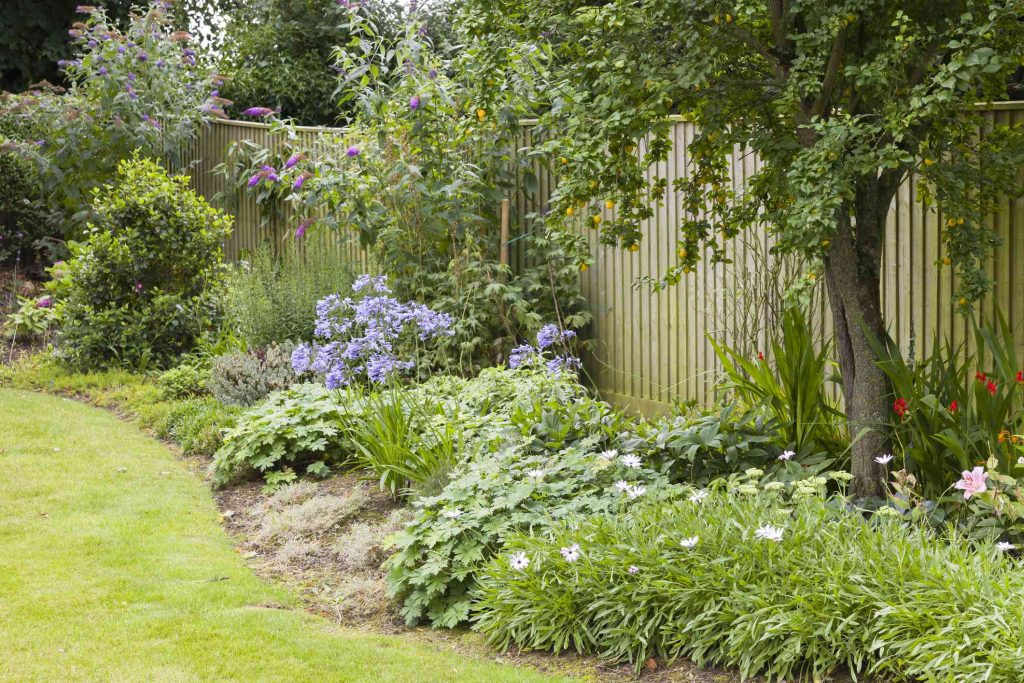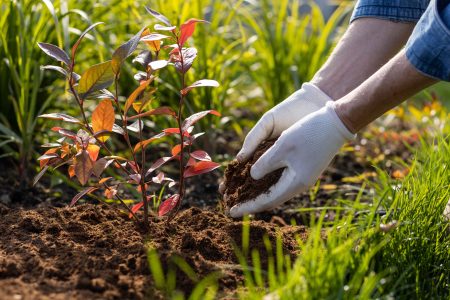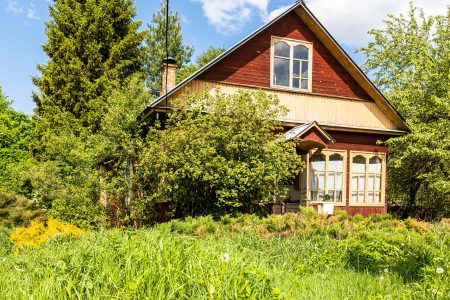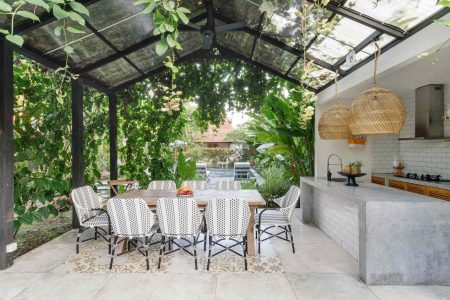Many properties have fences enclosing them, for many reasons: privacy, security, and definition of space. A new fence installation can be expensive, and repairs can also be costly and time-consuming, so some property owners turn to landscaping to help enhance or camouflage an existing fence.
Depending on your budget, skills, and time, you can re-invigorate your fence line with any number of simple design ideas. You can even create a fenceless border using plants. We’ve gathered up some creative ideas with the help of a few landscaping experts to help you explore fence line possibilities.
Meet the Expert
- Kim Zimmerman is a master gardener and owner of Rowdy Poppy, a floral design house and micro-farm.
- Ward Dilmore is a professional landscaper and landscape designer for Petrus Landscape, a luxury estate landscape design company.
- Mary Jane Duford is a master gardener and founder of Home for the Harvest.
Want more gardening tips? Sign up for our free gardening newsletter for our best-growing tips, troubleshooting hacks, and more!
-
01
of 15Create an Airy Pollinator Garden
Open rail fences allow for a range of garden possibilities, but one of the easiest designs is to plant assorted flowering perennials. A simple border made of pavers or stones creates a slightly raised bed and easy growing pollinator-friendly plants increase your garden’s biodiversity.
-
02
of 15Plant a Flowering Hedge
A dense-branching hedge is a great way to cover up a less-than-attractive fence or provide added privacy and structure. Ward Dilmore, a professional landscaper and landscape designer for Petrus Landscape, likes the English laurel (also known as cherry laurel) for its fast growth and glossy, attractive leaves that create a beautiful green wall aesthetic.
-
03
of 15Create a Curving Flower Bed Border
If you want a structure to define space, but don’t want to install a fence, you might consider a perennial flower bed. It probably won’t keep out wandering pets (or neighbors) but it’s an aesthetically pleasing option. Use stone or brick for a low curving wall that’s easy to maintain.
-
04
of 15Grow Climbing Hops on an Arbor Gate
Kim Zimmerman, a master gardener and owner of Rowdy Poppy, recommends hops as a fast-growing perennial climbing vine. Its lack of flowers means it doesn’t require deadheading. Zimmerman does caution that it may attract Japanese beetles, but adding milky spores to the soil in spring is a great natural preventive.
Continue to 5 of 15 below -
05
of 15Plant an Aborvitae Wall to Accent Tall Trees
Arborvitae shrubs are a popular choice for green fences, especially large varieties like ‘Green Giant’ or ‘Emerald Green.’ If you have mature trees in your surrounding area, consider the handsome architectural look of these evergreens, especially with backdrops of colorful deciduous trees.
-
06
of 15Use Color Boldly
If you have an old wooden fence, consider painting it. Choose a bold color, plant some bright perennials and annuals, and you’ll have a three-season fence line garden that makes everyone’s day a little more happy.
-
07
of 15Let Flowering Shrubs Adorn an Open Rail Fence
Open rail fencing that divides a large open space lends itself to large flowering shrubs whose blooms spill over the railings. Long-blooming possibilities include broadleaf hydrangeas, azaleas, dwarf rhododendrons, and weigela.
-
08
of 15Balance Shapes, Sizes, and Function
One very simple approach to liven up your fenced in backyard is to combine visually and functionally diverse areas. The row of arborvitae shrubs, spacious herb bed edged with stones, and hammock area create a sense of flow that is visually dynamic as well as practical.
Continue to 9 of 15 below -
09
of 15Layer Low Hedges With Small Trees
Low-growing hedges like dwarf boxwoods and creeping junipers can be layered side by side to create an interesting architectural look in front of small landscape trees. Choose foliage in contrasting colors for an even more striking display.
-
10
of 15Soften Fence Lines With Cottage Style Plantings
Cottage style can look romantic or whimsical, depending on your plant choices. The striking textures and colors of pink roses, spiky purple catmint, and fluffy chartreuse lady’s mantle transform this basic picket fence.
-
11
of 15Use Assorted Evergreens for a Four Season Border
Consider mixing and matching different evergreens for a large, dramatic hedge. Zimmerman likes narrow-shaped spartan junipers, while Mary Jane Duford, a master gardener and founder of Home for the Harvest, loves the classic look of columnar hornbeam trees. Don’t forget color: from deep blue to vibrant chartreuse, evergreens offer a gorgeous array of hues.
-
12
of 15Add Trellises for Texture and Vertical Interest
Lightweight wooden or metal trellises for flowering vines or climbing roses add visual vertical interest next to round shrubs, as well as plant support.
Continue to 13 of 15 below -
13
of 15Go for Easy Elegance With Panicle Hydrangeas
Panicle hydrangeas are great shrubs to plant near fences, with their long-lasting, color-shifting blooms. Duford likes the look of columnar oak trees underplanted with dwarf panicle hydrangeas like ‘Little Lime’ or ‘Fire Light Tidbit’ to create structure and add interest through the seasons.
-
14
of 15Mix Angles With Organic Shapes
This simple fence planting gets its dynamic look from straight angled wooden fence posts, octagonal pavers to form a border, and lacy, freeform plants to balance the geometric shapes.
-
15
of 15Try a Xeriscape Rock Garden
In warm, dry climates, xeriscaping with drought-tolerant plants is an easy way to conserve water and design a beautiful fence line garden. Gravel instead of mulch works well with succulents, and larger rocks create a natural but ornamental look.
Fence line landscaping can be something that changes constantly, or utilizes a long-term plan for mature plantings like trees and large shrubs. Always learn what you can about mature size and maintenance requirements like pruning and water needs before investing in trees.
Some plants are adaptable to be large or small; for example, Dilmore likes the Podocarpus tree, an evergreen with thick needles that can be grown as a compact shrub or larger tree specimen. Knowing your local climate and growing conditions can also guide your choices. Zimmerman loves the columnar aspen for its seasonal beauty and its suitability for high elevations in Colorado.
Read the full article here









